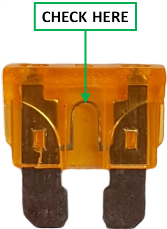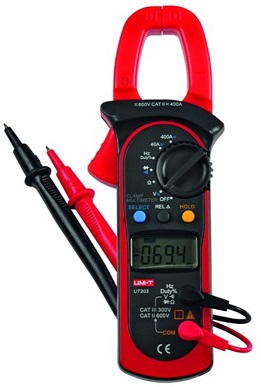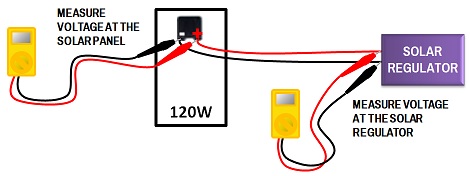Testing Fuses
When you're troubleshooting a problem, fuses are one of the early places to look. But not all fuses are easy to see whether they've blown or not. I don't know about you, but my eyesight isn't getting any better, and some fuses such as mega fuses, you usually can't see any sign that they've blown.
So you could take the cover off the fuse holder, unbolt the fuse, get out your best spectacles and your 500 lumin light... or you could get out your trusty clamp meter (you have one, don't you), and it will tell you what you need to know.
There are lots of fuses out there, but I'm just going to cover the fuses that we use in our installations,
Blade fuses
Having waxed lyrical about how rough it is to grow older, the blade fuse is probably the one you could check by looking at it.
WARNING: to remove a blade fuse from our battery, you will be very close to the exposed terminals on the battery. Make sure you have no jewlery on and nothing can come into contact with more than one terminal, including yourself.
We use 5 amp blade fuses in our terminal fuse adaptors. You will have either 4 or 5 of these connected to various terminals on your battery. Pull the blade fuse out of the white plastic holder.
The little hump in the middle of the fuse (it may be an "S" shape) will be broken.

Midi fuses
For a few more dollars. you can buy a clamp multimeter which uses the probes to measure voltage, resistance and a few other things and the clamp part can go over the wire - so the wire doesn't need to be disconnected - and give you a reading of how many amps are flowing through the wire.
Some caution is required with the selection of a meter for this purpose, because some measure AC current accurately, but not DC current and others measure DC current accurately, but not so much AC current. For general DC use, where precision down to the last decimal point isn't really necessary, we've found that the UNI-T UT203 does the job and is fairly robust.
A really good quality brand is Fluke. They are very good, but very expensive and rather fragile.

UNI-T UT203
How to use a clamp multimeter
- For an accurate measurement, put the multimeter near the wire you want to check but not over it. Press the REL button and this will zero out anything the multimeter could be reading in the surrounding area (there's always a bit of electricity floating around), then clamp the meter over the top of the wire:
- If, on the left hand side, the minus sign appears, flip the meter over.
- If you want to get really accurate, put the clamp on each way and average the two readings.
- If you want to read very small current, wrap the wire around the tong of the clamp. Divide the reading by the number of times you wrap the wire around. This increases the accuracy of the reading.
Testing cabling from solar panels to battery
This test is best suited if you have a PWM solar controller, and is for determining if and where you might have a wiring problem.
On a good solar day, when you've got good sun coming onto your panels:
- Use a multimeter to measure the voltage at the back of one of your panels.
- Now measure the voltage where the solar comes into the solar regulator in your RV.
- Next, take a reading of the battery voltage.

If there is a voltage drop anywhere between these 3 readings, your wiring is substandard and adding more solar isn't going to help much.

A simple way to test each individual panel without needing a multimeter and things to check for which could mean you have a dead panel. We also go over how to test the cabling from your panels to your solar controller with a multimeter.
Maybe you suspect that your RV battery, or one in a set of paralleled batteries, is on the way out. With just a mains charger and some time, it's possible to diagnose the health of a battery.